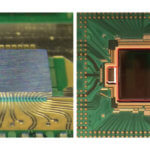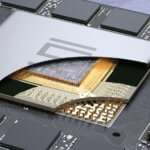Samtec’s Brian Niehoff presented “Biomedical Solutions: Integrating New Chips, Packages, and Modules” at the recent BIOMEDevice conference and exhibition in Boston.
To give a super-quick synopsis, Brian explains how microelectronics are incorporated into medical devices and diagnostic equipment. Since he’s a Samtec guy, he also elaborates on Samtec Glass Core Technology (GCT), a proprietary process that leverages the performance benefits of glass, and how it can be also be used in biomedical solutions.
Brian covers a lot of ground in this presentation, but a few highlights include:
- The importance of making sure medical technology and operations are designed for manufacturability. Three critical elements are controlling costs, creating simple designs, and reliability.
- The most important elements of medical technology development include getting the design right the first time, making sure the device is invisible and unobtrusive for the patient, and of course making sure the design is functional.
- And of course simplicity of design leads to quality.
- Of course miniaturization is huge, especially in medical wearables. The medical wearables market is expected to reach $160 billion (USD) by 2028. Sensors will be a huge component.
- Brian reviews recent breakthroughs in medical wearables devices.
Glass Core Technology (GCT)
As the electronics industry continues to drive towards smaller and denser footprints, Samtec can help to miniaturize substrate packaging through the use of Glass Core Technology (GCT).

GCT leverages the benefits of glass, over silicon, to allow smaller diameter vias and a smaller pitch from via-to-via.
GCT uses Through-Glass Vias (TGV) to connect to a Redistribution Layer (RDL) to create a desired circuit on the glass substrate. This allows the IC’s to be directly placed on the glass substrate, and makes glass suitable for Automotive MEMS and Sensors, RF components and modules, CMOS image sensors, Automotive Camera Modules, Lidar, and more. Samtec can also add fluidic structures in the glass for mixing or transfer and electronics cooling.
Click here to learn more about Glass Core Technology. And here’s a brief video that is an overview of GCT and its capabilities.


